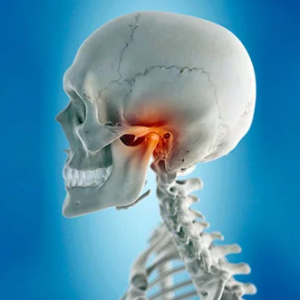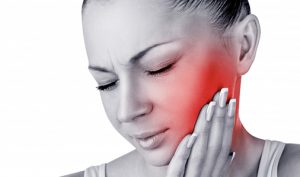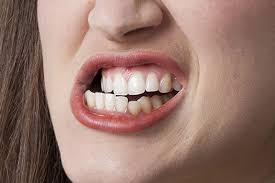When we think about dental, we generally think about teeth, gums, even the tongue. But we often forget about a very important part that allows our lower jaw to move: the temporomandibular joint (a.k.a. the TMJ). The joint acts as a sort of hinge, connecting your lower jaw to the rest of your skull, and the joints are located in front of each ear.

TMJ Dysfunction is when there is a problem with the TMJ (either with the surrounding muscle or the joint/bone itself). This can potentially cause serious problems. Around 30% of adults suffer from TMJ Dysfunction at some point in their lives. If you think you’re one of these people, never fear: your dentist is here.
The Symptoms of TMJ Dysfunction
There are a lot of signs that point towards TMJ Dysnfunction but they vary from person to person and they can be complex. It is definitely important to visit your local dentist to get a full evaluation and accurate diagnosis. In some cases, it may even be necessary to refer you to an oral & maxillofacial surgeon for a more specialised analysis.

The symptoms you experience may involve:
- your jaw clicking or popping when you open/close your mouth;
- a “locked” jaw (where you find it very hard to open/close your mouth and it is stuck in a particular position);
- consistent headache or ache/pressure in your ears;
- pain in your jaw muscles (especially when they’re under pressure, e.g. when you yawn);
- a change in your occlusion (where your upper jaw doesn’t meet your lower jaw as it normally does);
- pain in your TMJ (which can radiate into your head, neck, or even upper back);
- facial pain; and
- pressure behind your eyes.

What Causes TMJ Dysfunction?
Generally, TMJ Dysfunction is brought on by several contributing factors. Sometimes, a specific cause may not even be determinable. But there are common causes for TMJ Dysfunction which include:
- Bruxism (involuntary teeth grinding or jaw clenching);
- uneven occlusion (due to genetics, damaged/ground down teeth, maladjusted fillings, new crowns or dentures, etc.);
- a traumatic injury to the lower jaw (or the TMJ itself); and
- diseases or degenerative conditions (such as osteoarthritis or fibromyalgia).

So now that you know what TMJ Dysfunction is, what should you do about it? Find out in our next blog as we delve into home treatments as well as treatments your dentist can provide.
